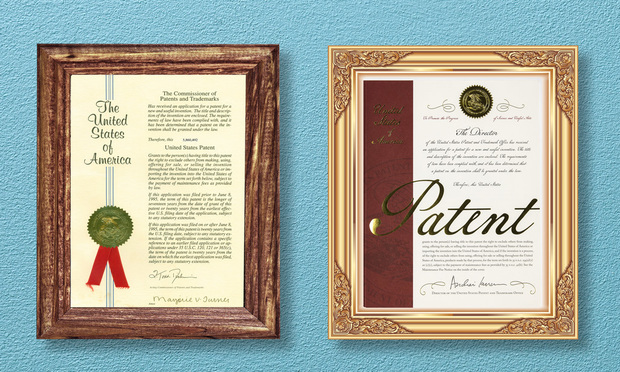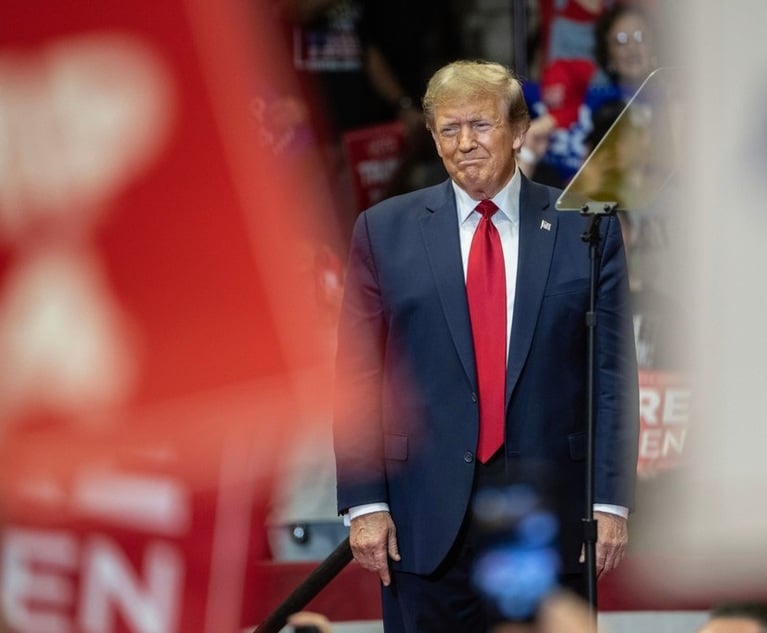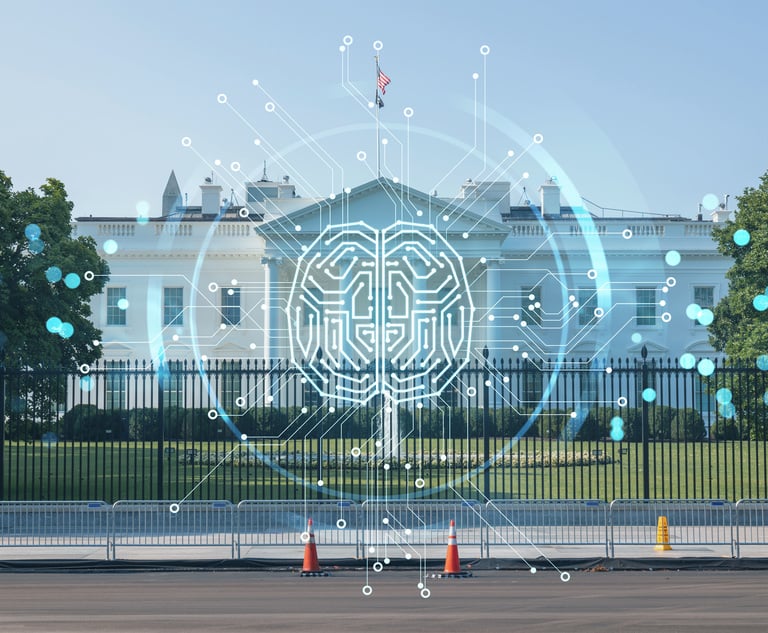Here's How Startups Can Build Patent Strength Fast
Everybody knows that strong patents help decide the winners and losers of business competition. But there's another, little-known way for companies to acquire the patents they need: they can simply buy them.
April 11, 2018 at 03:55 PM
7 minute read

Everybody knows that strong patents help decide the winners and losers of business competition—which is why companies applied for roughly 600,000 of them last year (though only half that number were granted). But there's another, little-known way for companies to acquire the patents they need: they can simply buy them.
Patent sales usually involve a smaller company buying patents from a larger one, with the transfers benefiting both buyer and seller alike. This is especially true for startups, which can use patent purchases to leverage the vast R&D resources of major technology firms.
Take Uber. As is often the case with startup companies, it would have taken Uber many years to internally develop a patent portfolio capable of protecting its innovations and ensuring freedom of action in the marketplace. This is a perennial problem faced by startups historically, from Google to Facebook more recently, especially as they prepare to go public, which along with generating cash also paints a giant patent bullseye on the newly public company's back.
“With patents taking on average four years to grant, we hadn't had enough time to build up our own portfolio,” explained Uber's patent transactions lead Kurt Brasch. “And we knew we needed some way to protect our business.”
So in January 2017, Uber purchased 66 ridesharing patents and 10 patent applications from telecom giant AT&T. Strategically, the deal enabled Uber to piggy-back on the research prowess of one of America's greatest technology innovators—one with the legacy of innovation of the fabled Bell Labs—at a small fraction of the cost and time it would take to develop these patented innovations itself. The transfer of AT&T's patents to Uber was recorded by the Patent Office on Feb. 8, 2017.
Uber's purchase was also very smart tactically. For one thing, the purchase of AT&T's ridesharing patents gave Uber priority intellectual property protection prior to anything claimed by Lyft or other Uber competitors—protection that even predates Uber's founding in 2010. One patent goes all the way back to 1999, but most have priority dates back to 2005.This puts Uber in the catbird seat when it comes to any potential infringement claims from competitors.
Second, at least five of these patents cover ridesharing innovations specifically, not just agnostic technological innovations like messaging or geolocation often used in ridesharing. One concerns “ride matching based on selection criteria and driver characteristic information.” Another covers “matching passengers with drivers using the location of each party.”
Uber not only gained priority date patents from the AT&T purchase, it gained stronger and more fundamental patents than many of those owned by its competitors.
According to the patent research and valuation firm Envision IP, LLC, “The acquisition is notable as it gives Uber significant patent protection on relatively broad aspects of location-based matching of passengers with drivers.” While the deal does not obviate all potential patent risk, says Envision, “it does provide Uber with seemingly fundamental patents for its industry.”
What does AT&T get from the deal? Simply put, return on investment.
“AT&T has one of the world's great research operations, with thousands of talented scientists and engineers breaking new ground in a variety of fields,” explains Scott Frank, president and CEO of AT&T Intellectual Property. “But not all of these inventions end up being deployed in our core business. So if we can help other innovative companies put them to use and at the same time get a return on our investment, then we think we're doing right not only by our shareholders but for consumers as well.”
Indeed, the Uber-AT&T deal was so beneficial it was honored as a “Deal of Distinction” this past fall by the Licensing Executives Society (LES), an organization of more than 3,000 professionals involved in the creation and commercial development of intellectual property.
Uber has also acquired patents from other companies, including Microsoft, deCarta, the Palo Alto Research Center (PARC), and Apparate International covering innovations in LIDAR (light detection and ranging for autonomous vehicle navigation) and other ridesharing-related technologies. And this past April, the company even launched its own direct patent purchase program, called UP3, inviting small companies and independent inventors to submit rideshare-relevant patented innovations of their own to the world's most valuable startup.
As Envision IP observed, “Uber appears to be doing an excellent job at identifying and acquiring third-party patents and patent portfolios which complement its platform. The latest patent acquisitions provide Uber with defensive patents that may help the company counter patent infringement attacks from competitors and other operating companies. These patents solidify Uber's patent dominance against Lyft, and may provide Uber further strategic leverage as the two companies continue to battle for the ridesharing market.”
“AT&T happened to be a very good partner for us,” said Uber's Kurt Brasch. “Transparency and rational pricing are unfortunately rare in the patent business, so when you get a very good partner like AT&T with such outstanding technology assets, it just generates a lot of good will. And that leads to a deal that benefits both sides.”
For his part, AT&T's Scott Frank said, “We really strive to make our technological advances available to society at large—and especially with world-changing young companies like Uber. It's good business, and it's the right thing to do.”
Uber came back for a second round of patent purchases from AT&T this past December, but it's not the only company buying patents from the research powerhouse. In the last 18 months alone, firms ranging from MIT-spinout E Ink and texting app developer Textsoft to search giant Google and speech software designer Nuance Communications all bought patents from AT&T—more than 1,000 of them in the case of Nuance. These purchases variously filled technical holes or reinforced patent protection for the buyers' products.
For HIMPP, for example—it's a consortium of hearing aid manufacturers that serve 90% of the world's hearing-impaired consumers—its goal in buying some AT&T patents in 2016 was, in its words, “to clear the road of unjust IP obstacles, thus enabling the development of the most advanced hearing instruments to the benefit of the hearing impaired.”
As HIMPP's outside IP counsel Jason Eisenberg explained, “AT&T offered us two patent families related to Bluetooth technology that enabled a hearing aid to also function as an enhanced telephone speaker. HIMPP was interested in these patents because they wanted to eliminate any confusion as to manufacturers continued rightful freedom to operate in various markets.”
And although AT&T is one of the world's largest sellers of patents—not surprising, given its vast research capabilities and patent portfolio—it's most certainly not the only one. Ever since it dropped out of the mobile handset business, for example, Nokia has also been selling large numbers of mobile communications patents.
In this way, patent sales and licensing are pro-competitive, giving new life to tech innovations and enabling a wider array of companies to deploy them in products.
The patent transaction and advisory firm Dominion Harbor Enterprises, for example, acquired the bankrupt Kodak's iconic portfolio of 4,000 fundamental imaging patents last year, and is currently licensing them to companies all over the world.
Think of it as a kind of “technological recycling”—a process by which viable but idle technology assets can be put to profitable use while reducing the need to reinvent the wheel, so to speak. It's the intellectual property version of “reduce, reuse, recycle.”
Marshall Phelps is the former corporate vice president of both IBM and Microsoft—the only person to head global patent operations at these two technology giants.
This content has been archived. It is available through our partners, LexisNexis® and Bloomberg Law.
To view this content, please continue to their sites.
Not a Lexis Subscriber?
Subscribe Now
Not a Bloomberg Law Subscriber?
Subscribe Now
NOT FOR REPRINT
© 2025 ALM Global, LLC, All Rights Reserved. Request academic re-use from www.copyright.com. All other uses, submit a request to [email protected]. For more information visit Asset & Logo Licensing.
You Might Like
View All
Best Practices for Adopting and Adapting to AI: Mitigating Risk in Light of Increasing Regulatory and Shareholder Scrutiny
7 minute read
GCs Must Act Now to Prepare for the Trump Administration’s First Months
8 minute readTrending Stories
- 16-48. It’s Comp Time Again: How To Crush Your Comp Memo
- 2'Religious Discrimination'?: 4th Circuit Revives Challenge to Employer Vaccine Mandate
- 3Fight Over Amicus-Funding Disclosure Surfaces in Google Play Appeal
- 4The Power of Student Prior Knowledge in Legal Education
- 5Chicago Cubs' IP Claim to Continue Against Wrigley View Rooftop, Judge Rules
Who Got The Work
Michael G. Bongiorno, Andrew Scott Dulberg and Elizabeth E. Driscoll from Wilmer Cutler Pickering Hale and Dorr have stepped in to represent Symbotic Inc., an A.I.-enabled technology platform that focuses on increasing supply chain efficiency, and other defendants in a pending shareholder derivative lawsuit. The case, filed Oct. 2 in Massachusetts District Court by the Brown Law Firm on behalf of Stephen Austen, accuses certain officers and directors of misleading investors in regard to Symbotic's potential for margin growth by failing to disclose that the company was not equipped to timely deploy its systems or manage expenses through project delays. The case, assigned to U.S. District Judge Nathaniel M. Gorton, is 1:24-cv-12522, Austen v. Cohen et al.
Who Got The Work
Edmund Polubinski and Marie Killmond of Davis Polk & Wardwell have entered appearances for data platform software development company MongoDB and other defendants in a pending shareholder derivative lawsuit. The action, filed Oct. 7 in New York Southern District Court by the Brown Law Firm, accuses the company's directors and/or officers of falsely expressing confidence in the company’s restructuring of its sales incentive plan and downplaying the severity of decreases in its upfront commitments. The case is 1:24-cv-07594, Roy v. Ittycheria et al.
Who Got The Work
Amy O. Bruchs and Kurt F. Ellison of Michael Best & Friedrich have entered appearances for Epic Systems Corp. in a pending employment discrimination lawsuit. The suit was filed Sept. 7 in Wisconsin Western District Court by Levine Eisberner LLC and Siri & Glimstad on behalf of a project manager who claims that he was wrongfully terminated after applying for a religious exemption to the defendant's COVID-19 vaccine mandate. The case, assigned to U.S. Magistrate Judge Anita Marie Boor, is 3:24-cv-00630, Secker, Nathan v. Epic Systems Corporation.
Who Got The Work
David X. Sullivan, Thomas J. Finn and Gregory A. Hall from McCarter & English have entered appearances for Sunrun Installation Services in a pending civil rights lawsuit. The complaint was filed Sept. 4 in Connecticut District Court by attorney Robert M. Berke on behalf of former employee George Edward Steins, who was arrested and charged with employing an unregistered home improvement salesperson. The complaint alleges that had Sunrun informed the Connecticut Department of Consumer Protection that the plaintiff's employment had ended in 2017 and that he no longer held Sunrun's home improvement contractor license, he would not have been hit with charges, which were dismissed in May 2024. The case, assigned to U.S. District Judge Jeffrey A. Meyer, is 3:24-cv-01423, Steins v. Sunrun, Inc. et al.
Who Got The Work
Greenberg Traurig shareholder Joshua L. Raskin has entered an appearance for boohoo.com UK Ltd. in a pending patent infringement lawsuit. The suit, filed Sept. 3 in Texas Eastern District Court by Rozier Hardt McDonough on behalf of Alto Dynamics, asserts five patents related to an online shopping platform. The case, assigned to U.S. District Judge Rodney Gilstrap, is 2:24-cv-00719, Alto Dynamics, LLC v. boohoo.com UK Limited.
Featured Firms
Law Offices of Gary Martin Hays & Associates, P.C.
(470) 294-1674
Law Offices of Mark E. Salomone
(857) 444-6468
Smith & Hassler
(713) 739-1250








